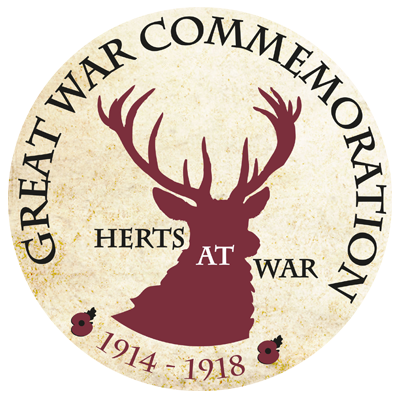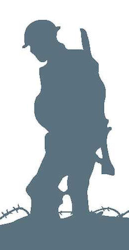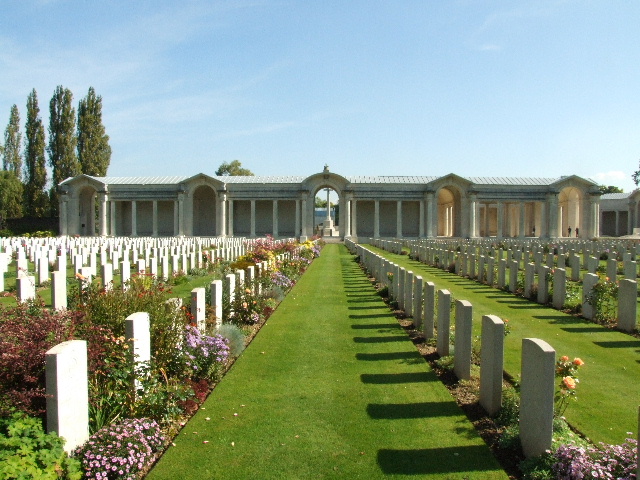Name
Albert John Tyler
1897
Conflict
First World War
Date of Death / Age
25/03/1918
20
Rank, Service Number & Service Details
Private
29788
Duke of Cornwall's Light Infantry
10th Bn.
Awards: Service Medals/Honour Awards
British War and Victory medals
Cemetery/Memorial: Name/Reference/Country
ARRAS MEMORIAL
Bay 6.
France
Headstone Inscription
N/A
UK & Other Memorials
Tring Town Memorial, St Peter & St Paul Church Roll of Honour, Tring, New Mill Baptist Church Roll of Honour, Tring
Pre War
Albert John Tyler was born in 1897 in Tring to Thomas Tyler, engine driver, and Clara Jane (nee Seabrook).
On the1901 Census the family of parents, Clara Jane (born 1895), Thomas William (born 1893), Ethel Ellen (born 1891), Albert and Elizabeth (born 1900) were living at 51, Wingrave Road, Tring.
On the 1911 Census Albert was listed as an errand boy and was living with his widow mother together with Thomas (Grocer’s assistant), Clara Jane (nursemaid), Elizabeth and Ada Kate (born 1904) at 51, Wingrave Road.
Wartime Service
Albert enlisted in Watford, Herts in Nov 1916 and initially joined the 4th Battalion, Queens (Royal West Surrey) Regiment, later transferring to the 10th Battalion, Duke of Cornwall's Light Infantry when he was sent to France in Dec 1917.10th Battalion DCLI had been in France since 1916 and were a pioneer Battalion. No Service record was found for Albert. He was was killed in action on 25 Mar 1918, aged 20, when he was hit by a bullet in his back during the German Spring Offensive. He has no known grave and his name is commemorated on the Arras Memorial, France.
From the Battalion War Diary: 25/3/18: platoon of ‘X’ Coy. met a large force of the enemy face to face in the Sunken Rd. about N7 c 1.7 and there was a real good scrap, both O.C. Coy. and Platoon Officer were badly injured and three quarters of the platoon went down but they wiped out the enemy to a man with the bayonet [marginal note reads ‘estimate that they killed 50 Germans.’] Owing to this unfortunate occurrence there was a gap and by referring to the map it will be seen that it was exceedingly dangerous as the enemy could approach the left rear down the valley of which we had no observation. There were no reserves at all as the line was too long for the number of men already, so it was decided to send every Signaller, Officers’ servants, 2 Sgt. Instructors and half the runners to fill the gap. Touch was then established with the 1/4th Shrops L.I. 19th Divn. and the position saved. This happened about 9am.
10.30am: about 10.30am the enemy had received reinforcements and luckily for us the 1st. K.R.R. Corps [King’s Royal Rifle Corps.] came up and in consultation with their C.O. it was decided that they should cover the general retirement by manning the high ground in M23 central, as the 63rd Division on our right were retiring thus leaving our flank in the air. This was done and the firing line retired to the same position, the left flank being in touch with the 19th Division who had fallen back a little further in order to have a better field of fire. The volume of fire from M23 central seemed to make the enemy somewhat shy of taking risks and he consequently came on very slowly. When the enemy had advanced to within 300 yds of our line it was found that our right flank was again in the air so it was decided to retire to the ridge in M15 & 20, leaving rearguards of DCLI in LE SARS under 2nd. Lt. A. A. R. OXFORD. This rearguard did very well indeed and allowed the main body to take up their new positions unmolested and to distribute S.A.A. [small arms ammunition], the shortage of which had now become acute and it was only by everyone looking out for abandoned clips that the situation improved considerably. This position was not held long as the enemy M.G.s fire on the high ground in LE SARS was very well directed, also the fact was that the 19th Divn. on our left were again retiring before we were ready to; possibly they were hard pressed. Two points are worth noting here; first, the enemy used a cavalry patrol on the LE BARQUE-EAUCOURT ABBAYE Rd. which was promptly and efficiently dealt with by a Lewis Gun team of this Battalion; Secondly, about this time all O.C. Coys. [officers commanding companies] were lost and it is certain that the casualties to officers were greatly caused by the insufficient experience of N.C.O.s and men of what to do; on one particular occasion a signal was given and the N.C.O.s and men did not know how to act on the signal. It is a great pity that the Battalion had not been given training, as when in extremity Pioneer Battalions are called up to do infantry work.
2p.m.: The Bn. crossed DYKE Rd. about 2p.m. (All were fighting on empty stomachs except for Iron Rations, which most had not had time to eat) and took up a very good position on the high ground in Sqs. M13 & 14. It was at this point that news came that the rearguard 10th DCLI, 1st KRR and small party of Royal Berks. were to go through the 5th and 6th. Inf. Bdes. who would take up the fight. S.A.A. was finished, men were tired, thirsty and hungry, no water was available and the above news bucked us up considerably. During the whole of these operations up to this point, close relationship had been kept with the C.O. 1st KRRs. The trained Infantry men of this Corps gave considerable moral as well as physical support to men of this Bn. who as was only natural lacked the necessary experience.
The Battalion was formed up into Artillery formation in Sq. 57 R60 and proceeded according to orders to concentrate at BEAUMONT HAMEL. An impression had arisen at this time that we were out of danger and that new troops were covering us; this inclined the men to straggle somewhat and lack of definite instructions made it very hard for Senior Regimental officers to make arrangements or to look ahead. At this point, however, all were brought to their senses by G.S.O. 3 meeting the Commanding Officer and saying that the Battalion, and also several other units would man the high ground about 57C Q12 & facing S.E., this position to be held for 6 hours only when the Battalion would be relieved. Eventually this ridge would be manned, the men dug fire steps and made the trench ready to receive the enemy. The Battn. was under the 99th Inf. Bde. in this Sector. Hot food was provided for the men which put a different complexion on life. Rations were also delivered, thus making the men a fighting force again. The night was spent in this position and was without exception the coldest night for three years. Two patrols were out but found no sign of the enemy.
From the Parish Magazine: “Albert John Tyler, the Duke of Cornwall’s Light Infantry was killed in France on March 25th 1918. He enlisted in the Royal West Surrey Regiment in November 1916, but on being sent to France in December 1917, he was transferred to the D.C.L.I. His Sergeant, writing on behalf of himself, the N.C.O’s and men, says ‘I have to break to you, the sad news, that your son was killed in action, while in this big retirement. I did my best for him, and stopped with him until his life went. He was by my side, when he got hit by a bullet in his back. I am sorry to have to lose such a good fellow, for he was always willing to do anything in his platoon. He fought well to the last, for his King and Country, and we all wish to express our deepest sympathy with you in the loss of your son.’”
Additional Information
His mother received a war gratuity of £5 10s and pay owing of £6 12s 9d. She also received a pension of 9 shillings a week. His brother Thomas received a payment of £1 6s 6d.
Acknowledgments
Brenda Palmer, Neil Cooper
Jonty Wild, tringlocalhistory.org.uk



